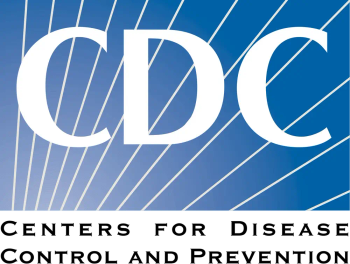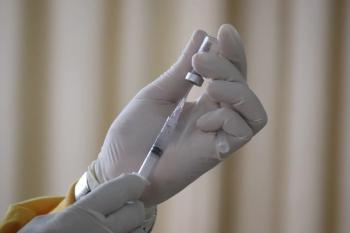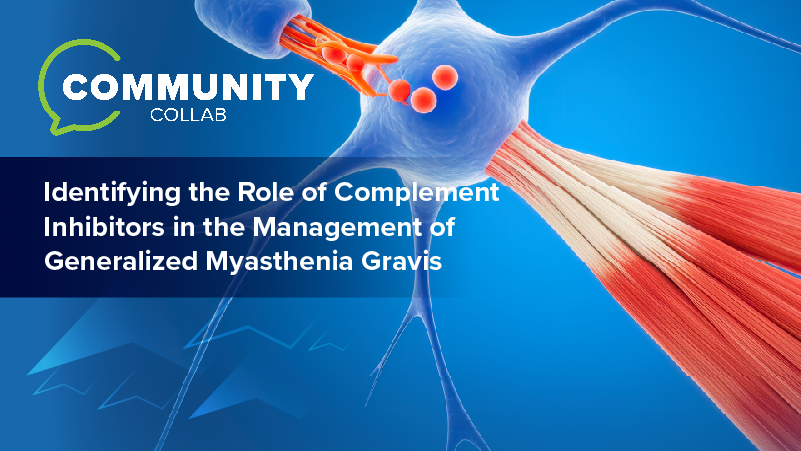
- Contagion, Summer 2025 Digital Edition
- Volume 10
- Issue 2
Aging in HIV: A Review of Common Comorbidities in People Living With HIV
This review highlights how people living with HIV are living longer due to antiretroviral therapy but face unique age-related health challenges, including cardiovascular disease, metabolic syndrome, renal dysfunction, neurocognitive decline, immunosenescence, bone loss, and frailty, requiring tailored screening and management strategies.
With the advent and ongoing development of novel antiretroviral agents, people living with HIV (PLWHIV) are living longer and experiencing the effects of HIV infection on aging. The success of antiretroviral therapy (ART) has transformed HIV from a fatal disease into a manageable chronic condition, with PLWHIV on effective ART having life expectancies approaching those of the general population.1 As a result, a growing proportion of PLWHIV are 50 years or older.2 The interplay between chronic HIV infection, the adverse effects of ART, and the natural aging process gives rise to unique challenges. These include an increased risk for conditions such as cardiovascular disease, metabolic syndrome, renal dysfunction, neurocognitive disorders, and immunosenescence.2 This review explores the impact of HIV and aging on these key comorbidities.
Cardiovascular Disease
PLWHIV have a heightened risk of atherosclerotic cardiovascular disease (ASCVD) compared with age-matched peers without HIV.3 This increased risk is believed to stem in part from ongoing immune system activation and inflammation, which persist even in those with well-controlled viral loads.3 Findings from studies have shown that PLWHIV exhibit significantly higher levels of proinflammatory cytokines, including IL-6 and tumor necrosis factor, even in the context of viral suppression.3,4 Rates of traditional risk factors, including hypertension and tobacco use, are also higher in PLWHIV, contributing to the additive risk in this population. Moreover, some older protease inhibitors and ritonavir-boosted darunavir increase ASCVD risk likely through metabolic disturbances and dyslipidemia.
Abacavir is also associated with heightened ASCVD risk by way of mechanisms involving endothelial dysfunction, vascular inflammation, and platelet hyperreactivity.3 Centers for Disease Control and Prevention guidelines recommend lipid screening at ART initiation, 4 to 8 weeks after ART modification, and annually if ASCVD risk factors are present or every 5 years if no risk factors are present.5 The REPRIEVE trial findings notably demonstrated that pitavastatin reduced major cardiovascular events in PLWHIV at low to moderate ASCVD risk, even when low-density lipoprotein cholesterol levels were normal.6 Many ASCVD risk prediction tools used for the general population, not including risk enhancers, can underestimate ASCVD risk in PLWHIV.7 The 2024 Infectious Diseases Society of America (IDSA) Primary Care Guidance for Persons With HIV document recommends the initiation of statin therapy for the primary prevention of cardiovascular disease in PLWHIV aged 40 to 75 years, regardless of lipid levels and ASCVD risk. However, the choice of statin and the dose should be carefully selected considering drug-drug interactions, renal function, hepatic function, and patient age. High-intensity statins are recommended for those with a 10-year ASCVD risk above 20% and moderate-intensity statins for those at lower risks.8 Prioritizing the management of traditional risk factors such as hypertension, diabetes, and tobacco use is essential for ASCVD risk reduction in addition to minimizing inflammation by ensuring viral suppression is maintained and coinfections are appropriately treated.3,7
Metabolic Syndrome
Metabolic syndrome—a collection of conditions including central obesity, high blood pressure, insulin resistance, and lipid abnormalities—is increasingly observed among older PLWHIV. Chronic inflammation from HIV can disrupt metabolic processes, and certain antiretrovirals, namely protease inhibitors such as lopinavir and ritonavir, may directly induce insulin resistance or dyslipidemia.9 Research indicates that PLWHIV are approximately 1.6 times more likely to develop metabolic syndrome compared with the general population, with an elevated risk among women and those on long-term ART.9,10 Changes in fat distribution, such as increased visceral fat and ectopic fat deposits, contribute to this metabolic imbalance, raising the likelihood of developing type 2 diabetes and cardiovascular complications.11 When evaluating for insulin resistance or diabetes in PLWHIV, clinicians should be aware that hemoglobin A1C (HbA1C) levels can underestimate glycemic status in patients on ART. Although an HbA1C level greater than or equal to 6.5% remains diagnostic for diabetes, IDSA guidelines recommend using fasting plasma glucose as a more reliable screening tool in PLWHIV.8
Glucagon-like peptide-1 (GLP-1) agonists are increasingly used to manage diabetes mellitus and obesity, but data on their use in PLWHIV remain limited. Although no major safety concerns have been identified, one review article highlights that GLP-1 agonists may reduce gastric acidity, potentially impairing the absorption of the antiretrovirals atazanavir and rilpivirine, which depend on an acidic environment.12 Until more data are available, lifestyle interventions remain the cornerstone of management of metabolic syndrome in PLWHIV.8
Renal Dysfunction
Chronic kidney disease (CKD) is another significant concern in the aging PLWHIV population. HIV-associated nephropathy, once a major cause of CKD, is rare in our current ART era. However, other forms of kidney disease, including hypertensive nephrosclerosis and diabetic nephropathy, are increasingly seen as PLWHIV age.13,14 There are several risk factors associated with a higher risk of kidney disease progression, including Black race, higher HIV viral loads, lower CD4 count, hepatitis C virus coinfection, and treatment with certain ARTs, including tenofovir disoproxil fumarate and the ritonavir-boosted protease inhibitors lopinavir and atazanavir.13
The monitoring of renal function, including serum creatinine (every 6 months) and urinalysis (annually), should be considered for early detection of kidney disease.8 In addition, the measurement of urine protein and albumin levels should be considered to identify renal disease. If concerns about renal impairment are noted, an assessment of ART may be indicated to mitigate the progression of kidney disease.8,13 As the number of PLWHIV requiring dialysis continues to grow, the field of transplantation has made important strides.13,15 The passage of the HIV Organ Policy Equity Act in 2013 marked a major milestone, allowing organ transplants from HIV-positive donors to HIV-positive recipients for research purposes. More recently, findings from an observational study demonstrated that kidney transplant recipients from HIV-positive donors have comparable survival and rejection rates to those receiving organs from HIV-negative donors.15
Neurocognitive Disorders
In an aging population of PLWHIV, neurocognitive manifestations of HIV are an important concern.16 PLWHIV face a significantly higher risk of cognitive decline compared with people without HIV, with an OR of approximately 2.44 per the results of one meta-analysis.17 HIV-associated neurocognitive disorder (HAND) can affect PLWHIV even with effective ART, and those with asymptomatic neurocognitive impairment have a 2- to 6-fold increased risk of symptomatic HAND compared with PLWHIV with no neurocognitive impairment.18 Other neurocognitive conditions, such as cerebrovascular disease and depression, may exacerbate cognitive impairment further.16,17 Additionally, HIV has also been associated with lower gray matter volume as well as white matter microstructural abnormalities, even among those whose condition is virally suppressed.19 Findings from studies suggest that effective ART can help improve cognition.20 Cognitive decline in older PLWHIV significantly affects their quality of life and potentially medication adherence. To address these challenges, clinicians should be able to recognize clues suggestive of dementia and have a proactive approach to formal cognitive screening to enable timely diagnosis and early intervention. This includes managing comorbid conditions and the provision of mental health support, both essential components of comprehensive HIV care.8,16
Immunosenescence
Immunosenescence—the gradual decline in immune system function with age—is accelerated in PLWHIV. Even with viral suppression, chronic immune activation can lead to premature aging of the immune system. Manifestations may include reduced naive T-cell production, decreased T-cell proliferation, diminished vaccine responses, and increased susceptibility to infections. 21,22 More research is needed into the pathophysiology and outcomes of immunosenescence.
Bone Health
PLWHIV have higher rates of low bone mineral density (BMD), which raises the risk of fractures in both PLWHIV on ART and those who are treatment naive.23,24 The cause of accelerated bone loss is multifactorial in the context of chronic inflammation as well as potential alterations in bone metabolism secondary to ART agents, particularly tenofovir disoproxil fumarate.23,24 Therefore, current guidelines recommend screening for low BMD in postmenopausal women and men 50 years or older.8,23 Condition management includes a combination of weight-bearing exercise, calcium and vitamin D supplementation, and lifestyle modifications, such as tobacco cessation. Medications such as bisphosphonates are also often used for the treatment of osteoporosis, and ART optimization should be considered to halt further bone loss.8
Frailty
Unlike chronological aging, frailty describes a cumulative loss of physiologic reserve and is a predictor of mortality and comorbidity.25 Findings from studies have demonstrated that PLWHIV have more frailty than matched cohorts who are living without HIV.26 A multimodal approach to frailty is needed for PLWHIV. Early identification through frailty screening and interventions for comorbid conditions is required. Additional strategies include interventions targeting nutrition as well as promoting physical activity within this population. Other considerations include addressing polypharmacy; concurrent tobacco, alcohol, and/or recreational drug use; and psychosocial/behavioral health interventions.8
Conclusion
As the population of PLWHIV continues to age, clinicians must adapt strategies to address the complex interplay between HIV, ART, and aging. Cardiovascular disease, metabolic syndrome, renal dysfunction, neurocognitive decline, immunosenescence, and bone health represent key areas of concern that warrant proactive screening and management. Understanding the interconnections is essential for optimizing care. Viral suppression is an important goal to minimize comorbid risks further.
Standard management algorithms for the general population without HIV may not always apply, and clinical guidelines are increasingly recognizing the need for HIV-specific considerations in risk assessment and treatment strategies. A multidisciplinary approach that incorporates geriatric principles, such as frailty, into HIV care is needed to ensure good quality of life in the aging PLWHIV population. Moving forward, ongoing research is needed to better understand the long-term effects of chronic HIV infection and ART on aging physiology as well as to identify biomarkers that can guide the prevention and treatment of age-associated comorbidities in PLWHIV.
References
Samji H, Cescon A, Hogg RS, et al;
North American AIDS Cohort Collaboration on Research and Design of IeDEA . Closing the gap: increases in life expectancy among treated HIV-positive individuals in the United States and Canada. PLoS One. 2013;8(12):e81355. doi:10.1371/journal.pone.0081355Smit M, Brinkman K, Geerlings S, et al;
ATHENA Observational Cohort . Future challenges for clinical care of an ageing population infected with HIV: a modelling study. Lancet Infect Dis. 2015;15(7):810-818. doi:10.1016/S1473-3099(15)00056-0Feinstein MJ, Hsue PY, Benjamin LA, et al;
American Heart Association Prevention Science Committee of the Council on Epidemiology and Prevention and Council on Cardiovascular and Stroke Nursing; Council on Clinical Cardiology; Stroke Council . Characteristics, prevention, and management of cardiovascular disease in people living with HIV: a scientific statement from the American Heart Association. Circulation. 2019;140(2):e98-e124. doi:10.1161/CIR.0000000000000695Hmiel L, Zhang S, Obare LM, et al. Inflammatory and immune mechanisms for atherosclerotic cardiovascular disease in HIV. Int J Mol Sci. 2024;25(13):7266. doi:10.3390/ijms25137266
Panel on Clinical Practices for the Treatment of HIV Infection. Guidelines for the Use of Antiretroviral Agents in HIV-1-Infected Adults and Adolescents. Centers for Disease Control and Prevention. July 14, 2016. Accessed June 11, 2025.
https://stacks.cdc.gov/view/cdc/7385 Grinspoon SK, Fitch KV, Zanni MV, et al;
REPRIEVE Investigators . Pitavastatin to prevent cardiovascular disease in HIV infection. N Engl J Med. 2023;389(8):687-699. doi:10.1056/NEJMoa2304146Recommendations for the use of statin therapy as primary prevention of atherosclerotic cardiovascular disease in people with HIV. Clinical Info HIV.gov. February 27, 2024. Updated September 12, 2024. Accessed June 11, 2025.
https://clinicalinfo.hiv.gov/en/guidelines/hiv-clinical-guidelines-adult-and-adolescent-arv/statin-therapy-people-hiv Horberg M, Thompson M, Agwu A, et al. Primary care guidance for providers of care for persons with human immunodeficiency virus: 2024 update by the HIV Medicine Association of the Infectious Diseases Society of America. Clin Infect Dis. Published online October 12, 2024. doi:10.1093/cid/ciae479
Trachunthong D, Tipayamongkholgul M, Chumseng S, Darasawang W, Bundhamcharoen K. Burden of metabolic syndrome in the global adult HIV-infected population: a systematic review and meta-analysis. BMC Public Health. 2024;24(1):2657. doi:10.1186/s12889-024-20118-3
Nguyen KA, Peer N, Mills EJ, Kengne AP. A meta-analysis of the metabolic syndrome prevalence in the global HIV-infected population. PLoS One. 2016;11(3):e0150970. doi:10.1371/journal.pone.0150970
Ramirez Bustamante CE, Agarwal N, Cox AR, Hartig SM, Lake JE, Balasubramanyam A. Adipose tissue dysfunction and energy balance paradigms in people living with HIV. Endocr Rev. 2024;45(2):190-209. doi:10.1210/endrev/bnad028
Zino L, Tack CJ, Richel O, Burger DM. GLP-1 agonists for people living with HIV and obesity, is there a potential? HIV Med. 2023;24(10):1029-1034. doi:10.1111/hiv.13521
Cohen SD, Kopp JB, Kimmel PL. Kidney diseases associated with human immunodeficiency virus infection. N Engl J Med. 2017;377(24):2363-2374. doi:10.1056/NEJMra1508467
Diana NE, Naicker S. The changing landscape of HIV-associated kidney disease. Nat Rev Nephrol. 2024;20(5):330-346. doi:10.1038/s41581-023-00801-1
Durand CM, Massie A, Florman S, et al;
HOPE in Action Investigators . Safety of kidney transplantation from donors with HIV. N Engl J Med. 2024;391(15):1390-1401. doi:10.1056/NEJMoa2403733Clifford DB, Ances BM. HIV-associated neurocognitive disorder. Lancet Infect Dis. 2013;13(11):976-986. doi:10.1016/S1473-3099(13)70269-X
Deng L, Zhang X, Gao Y, et al. Association of HIV infection and cognitive impairment in older adults: a meta-analysis. Ageing Res Rev. 2021;68:101310. doi:10.1016/j.arr.2021.101310
Grant I, Franklin DR Jr, Deutsch R, et al;
CHARTER Group . Asymptomatic HIV-associated neurocognitive impairment increases risk for symptomatic decline. Neurology. 2014;82(23):2055-2062. doi:10.1212/WNL.0000000000000492Underwood J, Cole JH, Caan M, et al;
Comorbidity in Relation to AIDS Collaboration . Gray and white matter abnormalities in treated human immunodeficiency virus disease and their relationship to cognitive function. Clin Infect Dis. 2017;65(3):422-432. doi:10.1093/cid/cix301Cysique LA, Vaida F, Letendre S, et al. Dynamics of cognitive change in impaired HIV-positive patients initiating antiretroviral therapy. Neurology. 2009;73(5):342-348. doi:10.1212/WNL.0b013e3181ab2b3b
Deeks SG. HIV infection, inflammation, immunosenescence, and aging. Annu Rev Med. 2011;62:141-155. doi:10.1146/annurev-med-042909-093756
Masters MC, Landay AL, Robbins PD, et al. Chronic HIV infection and aging: application of a geroscience-guided approach. J Acquir Immune Defic Syndr. 2022;89(suppl 1):S34-S46. doi:10.1097/QAI.0000000000002858
Battalora L, Buchacz K, Armon C, et al;
HIV Outpatient Study and SUN Study Investigators . Low bone mineral density and risk of incident fracture in HIV-infected adults. Antivir Ther. 2016;21(1):45-54. doi:10.3851/IMP2979Hileman CO, Eckard AR, McComsey GA. Bone loss in HIV: a contemporary review. Curr Opin Endocrinol Diabetes Obes. 2015;22(6):446-451. doi:10.1097/MED.0000000000000200
Piggott DA, Erlandson KM, Yarasheski KE. Frailty in HIV: epidemiology, biology, measurement, interventions, and research needs. Curr HIV/AIDS Rep. 2016;13(6):340-348. doi:10.1007/s11904-016-0334-8
Kooij KW, Wit FW, Schouten J, et al;
AGEhIV Cohort Study Group . HIV infection is independently associated with frailty in middle-aged HIV type 1-infected individuals compared with similar but uninfected controls. AIDS. 2016;30(2):241-250. doi:10.1097/QAD.0000000000000910
Articles in this issue
5 months ago
Measles 2025: Looking Back and Moving Forward6 months ago
Contagion Summer 2025 Digital EditionNewsletter
Stay ahead of emerging infectious disease threats with expert insights and breaking research. Subscribe now to get updates delivered straight to your inbox.

































































































































































































































































































































